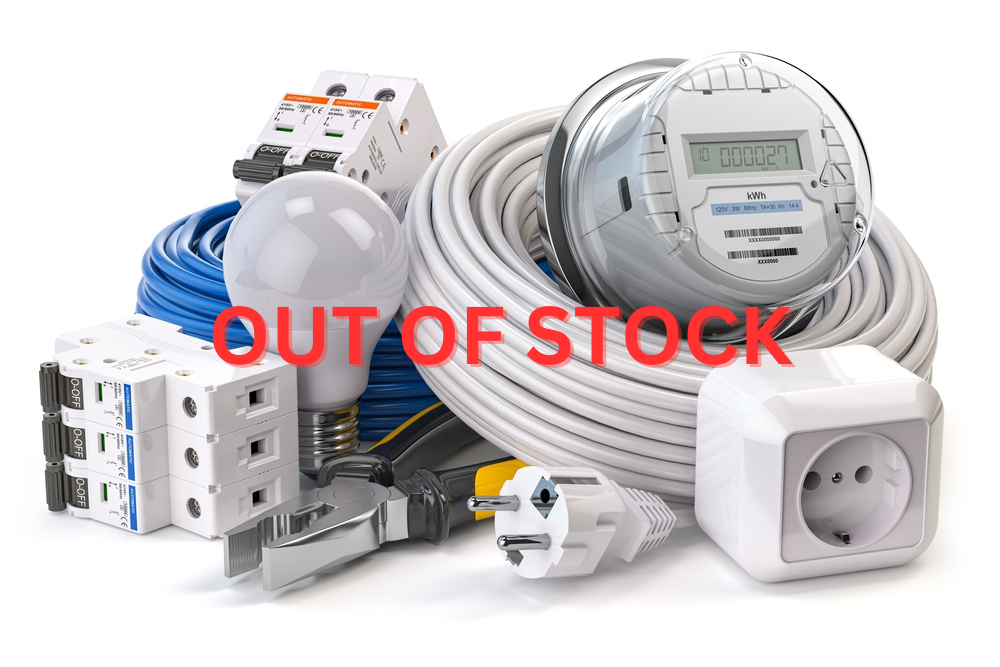Overcoming Challenges in Electrical Contractor Supply Management
 Author: Brett Knox
Author: Brett Knox
March 27, 2024 - 6 MIN. READ
Efficient supply management is at the core of successful electrical contracting. You can have a team of talented electricians, a great marketing and sales message, and sound financials, but if you cannot get the parts and materials you need when you need them, you will struggle to get jobs done on time and within budget.
If you overpay for supplies, your profit margins will suffer. If you overstock them, you will tie up working capital and incur storage costs. In a highly competitive market with high customer demand and numerous customer options, you need to manage your supply chain well.
In this article, we will discuss how you can do just that. Find out more about the causes of supply chain disruption and how to mitigate their risk, effective inventory management, optimizing procurement, dealing with regulatory issues, and more.
Supply Chain Disruptions and Shortages
There are many causes for electrical contractor supply chain disruptions. Below is a short list of them.
Global Events
The COVID-19 pandemic is a classic example of a worldwide event that was devastating in the scope of its impact and duration, and it is still being felt. The world had become accustomed to a highly complex web of intertwined suppliers stretched across the globe.
In one fell swoop, COVID shut down factories, ports, and ground and air transportation. The web unraveled, and commerce with it.
Natural Disasters
Natural disasters like earthquakes, hurricanes, and floods can bring regional supply chains to a halt.
Material Shortages
Material shortages drive prices up and slow down the supply chain. Recent examples affected concrete and microchips.
Logistics Issues
We have already discussed port closings. Trucking is the leading overland transportation mode in the U.S.
Trucking costs are susceptible to rises in the price of diesel fuel, which are generally passed on immediately by contract. Driver shortages can affect trucking schedules, and they are a growing issue in the United States.
Mitigation Strategies
There are steps you can take to mitigate these risks. First of all, wherever you can, domesticate your supply chain. Bringing it onshore shortens distances, and while it does not remove all risk, it makes it easier to manage closely.
Next, diversification is a key strategy. If you have put all your eggs in one supplier's basket, consider splitting your volume among two. Position it as a risk-diversification strategy and a way to create competition among suppliers.
Of course, you have to respect business realities. If a long-time supplier is strategically important and has excelled for years, consider having a dialogue to confirm that their risk management program is robust and that they do the same with their suppliers. If not, make this a requirement if you have enough leverage.
Geographically, look for suppliers with distribution centers closer to you to shorten delivery times and save on fuel costs.
Next, consider warehousing key supply items. First, analyze your usage over a year. Identify the items you use the most, and classify them by criticality and past lead times. Depending on your financial position, pre-order and warehouse an affordable stock of critical components.
Suppliers with whom you have a longstanding relationship may be able to provide storage for your backup stock. You can attempt to negotiate the cost of supplier storage, especially if you have a good relationship.
If your required inventory is especially high and complex and geographically dispersed, consider a third-party logistics provider. A 3PL receives and stores materials, performs inventory management with inventory control technology, and ships to your sites. Again, this only makes sense for large regional or national users with dispersed sites.
Electrical Contractor Supply Inventory Management and Control
Common Inventory Challenges for Electrical Contractors
Understocking and overstocking are typical issues for electrical contractor supply. Understocking can result in project delays, overpaying and shaving margin, “fire drills,” and customer dissatisfaction.
Overstocked inventory ties up cash AND generates costs. You may be surprised to find thousands sunk in inventory that you could use profitably on salaries or marketing, for example. You need enough but not too much inventory, and even then, you need the right, in-demand components.
The solution is a software-enabled inventory management system that allows you to order parts, take them into inventory when delivered, take your requisitions out and route them, and keep track of all items down to the part number, description, supplier, and date of delivery. You always know what you have, how many units you have on hand, and how much capital is wrapped up in inventory.
Inventory management brings essential transparency and speed to your business and saves you money. It crucially allows you to analyze and plan the purchasing of critical items readily.
Best Practices
Inventory should be automated and run by someone with financial expertise. Inventory analysis should take place once a month. Make it a key business activity, not an afterthought.
Procurement and Vendor Relationships
Effective procurement for electrical contractors is complex, especially for independent contractors. Nonetheless, getting procurement right is crucial to maximizing margin. Note that every dollar you save in purchased costs goes right to your bottom line.
The biggest challenge is getting clear and accurate purchasing data. You need to know how much you buy, where, and from whom, and at what prices. Otherwise, you are wearing a blindfold when you sit down for supplier negotiations.
You don’t need to be told that building strong supplier relationships is key to success. There is always a mutual dependency between you and your suppliers. They need your purchases, and you need their performance.
Always approach supplier negotiations with that in mind. Look for win-win outcomes. Deal with facts, and know your purchases and priorities. Be upfront about your needs and expect suppliers to do the same. In today’s volatile supply chains, sound negotiating skills are a necessity.
Regulatory Compliance
You already know that compliance with national and local electrical codes is essential. Generally, it is a contractual requirement as well. Failure to comply with codes will cause local inspectors or design engineers to withhold approval and cause delays, generate additional costs to meet code, and make for unhappy customers.
Be smart about this, and stay up to date with national and local codes. The National Electric Code (NEC) is published by the National Fire Protection Association (NFPA). It is subject to change, so be sure to follow NEC updates and make compliance compulsory with regular audits.
Technology and Digital Solutions
We have already touched on how technology is essential to modern supply management. As discussed, electronic procurement and inventory management systems provide essential illumination of information. The days of Excel spreadsheets and phone orders are over.
Mercifully, they have been replaced by technology that makes workflows more organized. For example, Radio Frequency Identification (RFID) uses microchips in barcodes attached to components. The microchip contains a description of the piece as well as other identifying information.
A reader device reads the information on the barcode and transmits the information by wireless radio waves to a backend system that stores information. RFID allows a user to electronically track all inventory from receipt in the warehouse to site delivery, automating labor-intensive activities.
Project Planning and Timelines
Parts and supplies lead times are a constraint on project schedules. You must stay on top of key parts delivery times—for example, electric panels and other switchgear. Be sure to keep track of past lead times as a scheduling indicator, and stay in close communication with your suppliers on lead times—especially larger, more complex ones.
Be sure to build in some contingency for categories with uncertain lead times. The more risk, the more cushion you'll need. This is where you must have a trusted supplier to work with you. In addition, let the customer know upfront about lead-time risk, and keep them closely informed.
Financial Management and Cost Control
Supply management challenges can directly impact your financial stability. Project delays slow down billing, and slow payment wreaks havoc on your cash flow, even to the point of keeping you from financing new projects. Angry customers can cut into future business.
You need to keep on top of financials at all times. Make tracking gross margins on each job a priority, and watch billing and payments closely. This should be a dedicated function in your firm. If possible, ensure that major bids get a second look from someone not on the project to ensure objectivity.
To deal with cash flow shortages caused by supply disruptions, set up reserves internally if you can, or look into setting up a standby letter of credit with your bank before the beginning of the year. Be sure to develop and keep a close relationship with your banker. If you have leverage, work out longer payment terms with your suppliers.
Simplifying Electrical Contractor Supply Management
The fastest and simplest way to overcome supply chain challenges is to join a group purchasing program like Raiven. These companies already have special pricing agreements with suppliers for electrical products, handle all the service level agreements (SLAs), have key contacts at suppliers for your inventory optimization, and more.
A group purchasing program helps you win more bids and increase your profits by lowering the prices you pay for equipment, materials and supplies for all your jobs.
How do they work? Companies like Raiven combine the buying power of all their members and negotiate deep discounts, service terms, and supply chain priorities so you pay less on all your everyday purchases. Since Raiven does all the supplier negotiations, you don’t have to spend time squabbling with suppliers.
Gain access to pre-negotiated discounts of 7%-30% from industry-leading manufacturers and distributors like ABB, alpscontrols, ChargePoint, Ferguson, Grainger, Graybar, Home Depot, HD Supply, Lowe’s, Schneider Electric, Sunbelt Rentals, United Rentals, and more. This extensive network of suppliers can help you reduce out-of-stock situations and save money.
Raiven is dedicated to serving electrical contractors, offering the most competitive prices on equipment, parts, and maintenance supplies, along with a streamlined purchasing platform for swift and efficient purchasing. Other key benefits:
- Stay informed with supply chain alerts that notify you of price fluctuations and changes in product availability for the supplies that matter most to your operations.
- Simplify your purchasing process by accessing all your preferred suppliers in one private marketplace, providing you with easy access to your negotiated discounts. Say goodbye to the hassle of navigating multiple websites to compare prices.
- Utilize our AI-powered purchasing tools, which automatically locate the lowest prices, ensuring cost savings even when your employees shop outside of your preferred supplier network.
Raiven is your all-in-one solution to save both time and money. Explore what Raiven can offer you by visiting the Raiven platform and discovering the benefits for your business.



